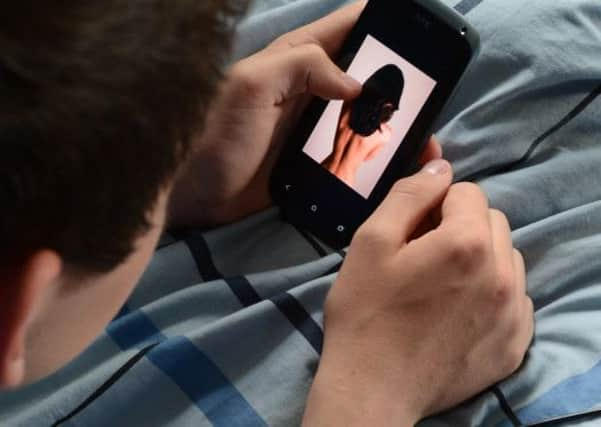‘Sexting’ among teens becoming norm - researchers


Their study found that sexting may now be part of teenage sexual social development.
However, researchers did not find a link between sexting and risky sexual behaviour over time.
Advertisement
Hide AdAdvertisement
Hide AdJeff Temple, an associate professor and psychologist at the University of Texas Medical Branch said: “We now know that teen sexting is fairly common.
“Sexting may be associated with other typical adolescent behaviours such as substance use. Sexting is not associated with either good or poor mental well being.
“Despite this growing body of knowledge, all existing sexting research looks across samples of different groups of young people at one time, rather than following the same people over time.
“Because of this, it’s unclear whether sexting comes before or after someone engages in sexual activity.”
The findings, published in the journal Paediatrics and Adolescent Medicine, are part of an ongoing six-year study of an ethnically diverse group of students from Texas.
Almost 1,000 teenagers from seven high schools taking part in the study periodically complete anonymous surveys detailing their history of sexting, sexual activity, and other behaviours.
Data was examined from the second and third years of the study to determine if teen sexting predicted sexual activity one year later.
Advertisement
Hide AdAdvertisement
Hide AdThey found the odds of being sexually active as high school juniors was slightly higher for youths who engaged in sexting, the previous year, compared to teens who did not sext.
The study did not find sexting to be linked with later risky sexual behaviours.
Co-author Hye Jeong Choi, a postdoctoral research fellow at the university, said: “Sending a nude photo may communicate to the recipient a level of openness to sexual activity, promote a belief that sex is expected, and serve to increase sexual advances, all of which may increase the chance of future sexual behaviour.
“Sexting may serve as a gateway behaviour to actual sexual behaviours or as a way to indicate one’s readiness to take intimacy to the next level.
“Being a passive recipient or asking for a sext does not likely require the same level of comfort with one’s sexuality.”
However, a leading internet safety group warned that youngsters who send such images can be at risk of exploitation.
Emma Hardy, director of external relations at Internet Watch Foundation charity, said: “Once you take these images you lose control of them and they can be copied or taken from the internet, which is quite disturbing.
“These naked images can reappear weeks or years later when they are looking for employment or good references.”
Advertisement
Hide AdAdvertisement
Hide AdLast year Daniel Perry, 17, from Dunfermline killed himself after being befriended, tricked and then blackmailed after making making explicit webcam recordings of himself.
SEE ALSO